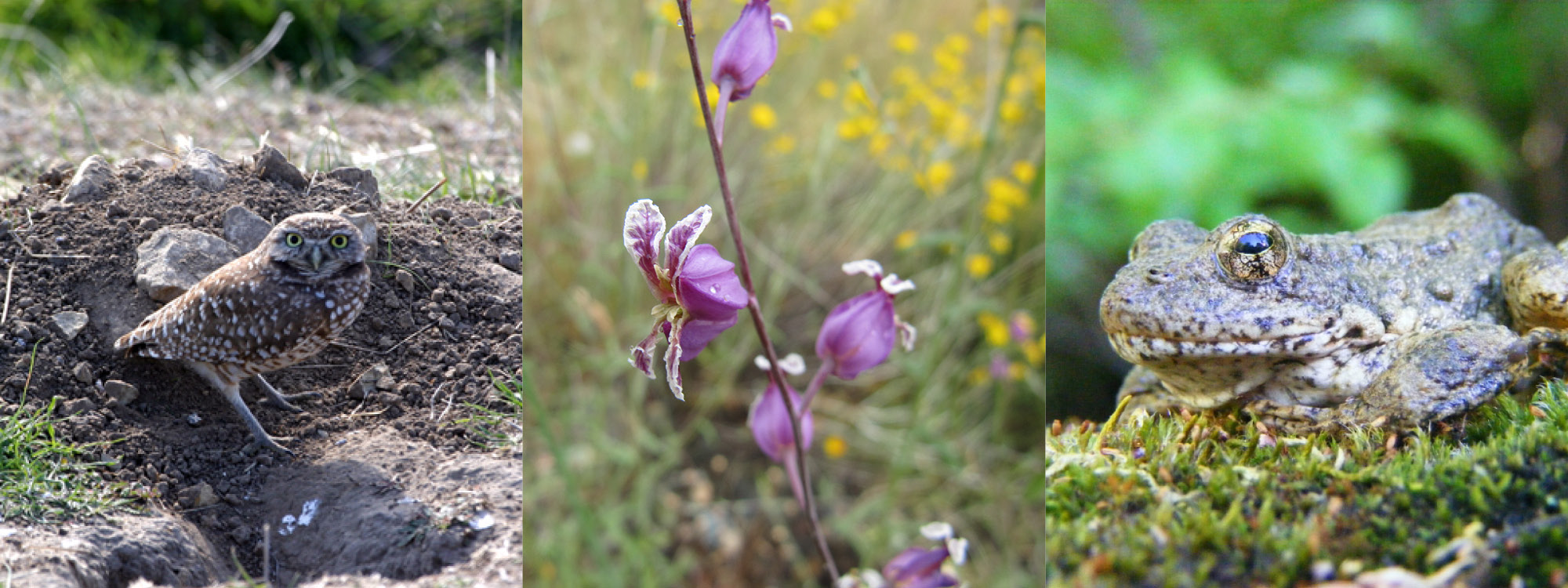
In November 2019, the CA Department of Fish and Wildlife approved the Santa Clara County RCIS (SCCRCIS), the first such plan in California. The SCCRCIS promotes the conservation of sensitive species, habitats, and other natural resources within Santa Clara County. The SCCRCIS includes goals and objectives for wildlife and habitat conservation, as well as actions and priorities which can guide investments in ecological resource conservation and potential opportunities for mitigation projects to offset impacts to species and other natural resources.
The Santa Clara Valley Open Space Authority (Authority) worked closely with a Steering Committee including representatives from The Nature Conservancy, Valley Transportation Authority, Valley Habitat Agency, State Coastal Conservancy, Conservation Strategy Group and others to develop the SCCRCIS.
Those actions will benefit the conservation of focal species, habitats, and other natural resources and they may be used as a basis to provide advance mitigation through the development of credits (See Mitigation Credit Agreements below). Examples of potential RCIS conservation and habitat enhancement actions include, but are not limited to:
The development of RCISs does not create, modify, or impose regulatory requirements or standards, regulate land use, establish land use designations, or affect the land use authority of a public agency.


The SCCRCIS Study Area covers the entirety of Santa Clara County and identifies conservation goals, priorities, and actions to protect endangered species, acquire land, restore habitat, and install wildlife crossings. The SCCRCIS also identifies planned infrastructure works in the County, including major transportation, water, transmission, and renewable energy projects. The SCCRCIS provides valuable information for infrastructure agencies to consider how strategic conservation investments could be made in advance of future project impacts to fulfill mitigation requirements, expedite project timelines, and generate effective conservation outcomes at a regional scale.
Now approved, the SCCRCIS can inform voluntary conservation and enhancement actions for focal species, sensitive habitats, and other conservation elements, including habitat connectivity and working landscapes. The Authority will collaborate with CDFW and infrastructure agencies to assess the potential for implementing conservation or habitat actions identified in the SCCRCIS through mitigation credit agreements (MCAs). MCAs are the crediting mechanism whereby habitat improvements or similar conservation actions identified in an approved RCIS and located within the boundary of the RCIS can be quantified and used to fulfill compensatory mitigation requirements established under state and federal environmental laws including the California Environmental Quality Act, the California Endangered Species Act, and the Lake and Streambed Alteration Program. Any person or entity may enter into an MCA with CDFW to create credits, even if the person or entity was not involved in the development of the RCIS. Persons or entities may create, use, sell, or otherwise transfer mitigation credits upon CDFW’s finding that credits have been created in accordance with Program requirements. Updated MCA Guidelines and a MCA Template were issued in June of 2023 by CA Department of Fish and Wildlife’s (CDFW). Draft Advanced Wildlife Connectivity Mitigation guidelines are available for comment from October 18th, 2023 to January 26, 2024
On September 22, 2016, the Governor signed Assembly Bill 2087 which created CA Department of Fish and Wildlife’s (CDFW) Regional Conservation Investment Strategy pilot program (Program). The Program went into effect on January 1, 2017 and is administered by CDFW's Habitat Conservation Planning Branch in Sacramento.
RCISs are a voluntary, non-regulatory, and non-binding conservation planning tool designed to encourage and guide investments toward natural resource conservation and climate change resilience. The RCIS Program uses a science-based approach to identify conservation and enhancement opportunities that, if implemented, will help California's declining and vulnerable species by protecting, creating, restoring, and reconnecting habitat and may contribute to species recovery and adaptation to climate change and resiliency. Once approved by CDFW, an RCIS may be valid for up to 10 years. CDFW may extend the duration of an approved or amended RCIS for an additional 10 years provided the RCIS is updated to include new scientific information and the RCIS continues to meet the Program’s requirements as outlined in Fish and Game Code (Chapter 9, Section 1850, et seq.).
The SCCRCIS complements and is consistent with the Santa Clara Valley HCP/NCCP (Habitat Plan) and builds on the Habitat Plan's conservation goals, objectives, and reserve design to "fill in the gaps" that are not addressed by the Habitat Plan, both in geography and in resources.
Valley Habitat Agency Letter of Consistency